By Jane Greenoff & Sue Hawkins
‘Oh that’s no good for me, I can’t draw’, I can hear you all cry! In fact, you don’t need to be able to draw to make your own charts. With the cunning use of tracing paper, you will be surprised how easy it is. Always begin with something small. As an example, I am going to show you how I made the chart a pansy design. If you have access to a computer design program, see below.
To Start
To start, you need a very simple outline drawing. I drew mine freehand, but you could very easily trace any flower from a picture in a gardening book or even from a photograph of your own garden. Choose a simple flower with large petals and no fiddly bits. Lay tracing paper over the picture and trace the outer edges of the petals and leaves. At this stage you may want to alter the size of your drawing.
If so, take it to a photocopier for enlarging or reducing. The size of the finished embroidery will also be altered by the size of the squared paper that you use and by the count of the fabric that you work on, but you need a drawing large enough to get plenty of squares in each petal in order to add enough colours and therefore detail.
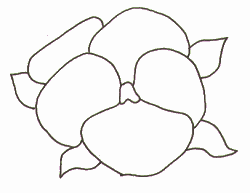
Trace the outer edges of the petals and leaves to create a simple outline.
Next
Next, use ordinary coloured crayons to add colour to the traced outline. Lay the tracing back over the original picture and shade in the different areas of colour. Do not worry too much about matching the colours, as you can take the original picture with you when you go to buy your threads.
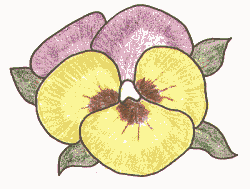
Lay the tracing back over the original picture and shade in the areas of colour using crayons
Now transfer your black outline on to squared paper (10 squares to the inch [2.5cm] is the best size), again by tracing. I use an artist’s light box for tracing, but you could tape the outline on to a window and lay the squared paper over it - the outline will show through clearly to be pencilled onto the squared paper. (A computer screen also makes a good light source for tracing, especially at night!) As you trace the outline onto the squared paper, faintly pencil in lines to show where colour changes occur.
Now square off the design; make a new outline, using the squares closest to the original line. Do this in pencil first and then ink in the lines with a fine felt-tipped pen when you are satisfied with the result. Trace the outline onto squared paper then square off the design.
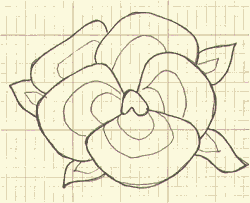
Trace the outline onto squared paper then square off the design.
To put the colours in, use the crayons again or create your own black-and-white symbols. Experiment to see which you prefer.
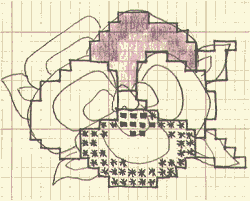
If you use symbols, choose heavier ones for the darker colours and lighter ones for the paler colours, so that your chart will be easier to follow. When buying threads, choose colours from the same families to achieve good shading effects. (To help you, manufacturers group their shades in these families on the racks.)
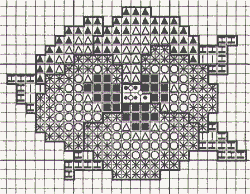
Put the colours in, using the crayons again, or by creating black-and-white symbols.







No comments:
Post a Comment